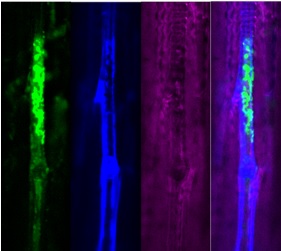Efficient and Targeted Delivery of Agrochemicals to Phloem Using Nanomaterials
Background
Pesticides, a major class of agrochemicals, accumulate in the environment, and progressive biomagnification can move them into the food chain. While the use of pesticides increases crop yield and quality, excessive use of pesticides leads to resistance to agricultural pests (i.e., pathogens), impacts air quality, and contaminates water and soil. This is particularly concerning since it is estimated that less than 0.1% of the 5.6 billion pounds of pesticides applied worldwide reach the intended biological target.
Brief Description
Prof. Juan Pablo Giraldo and his lab at the University of California, Riverside have developed a method for the targeted delivery of nanomaterials to the phloem such as pesticides, herbicides, and fertilizers using carbon dots with a sucrose-functionalized nanoparticle surface (sucQDs). This technology is advantageous surface functionalization with sucrose enables faster and more efficient foliar delivery of nanoparticles into the plant phloem, a vascular tissue responsible for long-distance transport of sugars from sources (i.e., mature leaves) to sinks (i.e., roots).
This technology is available for non-exclusive licensing.

Fig 1: Representative images showing the high colocalization of sucQDs with the fluorescent dye that labels phloem cells (in blue). Scale bar = 30 μm
Applications
- Nanomaterials for improving the delivery efficiency of agrochemicals to plant tissues and organs such as the phloem and roots.
- Targeted delivery to reduce the loss of agrochemicals in soil.
- A biorecognition delivery approach for targeting nanomaterials with cargoes to plant tissues and organs.
Patent Status
| Country | Type | Number | Dated | Case |
| United States Of America | Published Application | 20250194590 | 06/19/2025 | 2021-850 |
| Patent Cooperation Treaty | Reference for National Filings | WO 2023/168122 | 09/07/2023 | 2021-850 |
Additional Patent Pending
Contact
- Rekha Chawla
- rekha.chawla@ucr.edu
- tel: View Phone Number.
Other Information
Keywords
nanoparticle, phloem, carbon dot, nanomaterials, pesticides, herbicides
